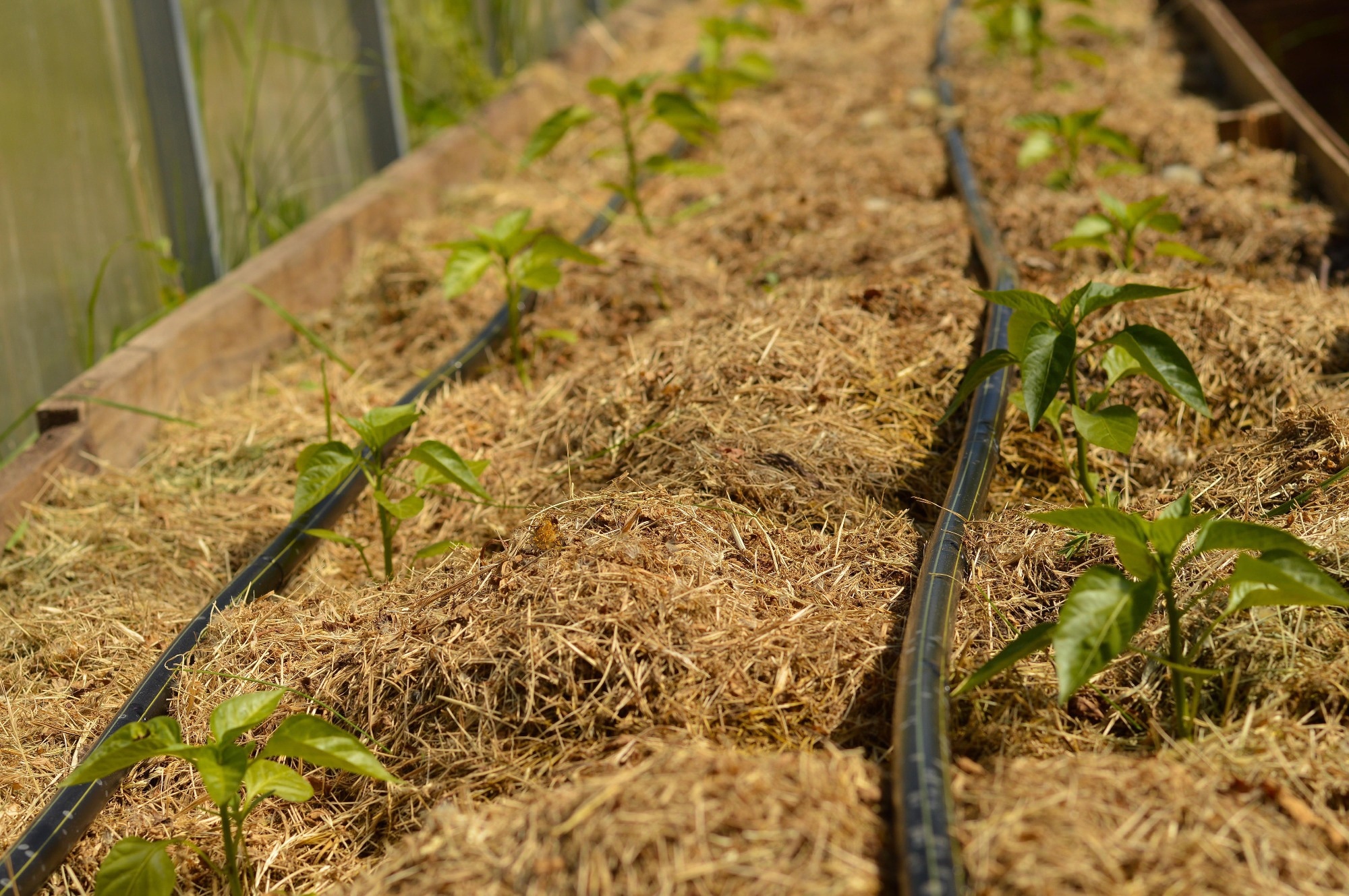Mulched drip irrigation is a technique practiced largely in arid regions of China to improve soil quality, increase crop yield, and save water.
In a recent study published in Npj Sustainable Agriculture, Chinese researchers conducted a 12-year-long evaluation of representative plots to determine changes in soil environmental factors and assess whether mulched drip irrigation was a sustainable agricultural approach in the long term.
 Study: Mulched drip irrigation: a promising practice for sustainable agriculture in China’s arid region. Image Credit: Irina Starikova1811/Shutterstock.com
Study: Mulched drip irrigation: a promising practice for sustainable agriculture in China’s arid region. Image Credit: Irina Starikova1811/Shutterstock.com
Background
The Xinjiang region in China is the largest cotton-producing region in the country and faces major challenges such as soil salinity and water scarcity. Mulched drip irrigation is an important agricultural practice in the region. It was introduced into farming practices in the 1990s to manage salt and water levels in the soil and stabilize the production of cotton.
Mulched drip irrigation uses plastic mulch and drip irrigation to reduce evaporation, move salts away from the crops, and retain moisture in the soil. This practice has significantly improved the cotton yields in the region and boosted the economic outcomes.
However, concerns surrounding the long-term use of mulched drip irrigation, especially in saline-alkali fields, include concerns about potential harm to soil health and the incomplete removal of accumulated salts from the soil.
Furthermore, the use of plastic mulch also raises concerns about pollution, and it remains unknown whether prolonged drip irrigation can disrupt soil microbial communities.
About the Study
In the present study, the researchers conducted a 12-year-long analysis of over 45,000 soil samples from the cotton fields of Xinjiang region that use mulched drip irrigation to investigate soil environmental factors such as soil salinity, microbial communities, and physicochemical properties.
The study used a comprehensive set of evaluations to assess the soil quality and microbial communities in the cotton fields that were mulched drip irrigated from 2009 to 2020. The soil sampling was conducted under a “space-for-time substitution” field design, where five cotton fields that were initially saline were selected, and each was mulched drip irrigated for different durations ranging from one year to 22 years.
Soil samples were collected at three different depths, from 0 cm to 140 cm, during the period of cotton growth, spanning the months from April to October. During the non-growth seasons, the samples were collected from 0 cm to 200 cm.
For analyzing soil stability, microbiome parameters, and physicochemical properties, soil samples were collected annually after the cotton was harvested.
The soil samples were then dried, sieved, and mixed with distilled water for electrical conductivity measurements to estimate soil salinity. Soil microbial deoxyribonucleic acid (DNA) was extracted from the soil samples, and the DNA quality was assessed using gel electrophoresis and spectrophotometry.
Polymerase chain reaction (PCR) was conducted to amplify a fragment of the bacterial 16S ribosomal ribonucleic acid (rRNA) gene and the internal transcribed spacer 1 (ITS1) gene from fungi. The amplified genes were then purified and sequenced.
Combustion methods were used to determine the carbon and nitrogen content of the soil samples, while the organic carbon content was measured after the samples were acid-treated. Other physicochemical properties that were measured included soil porosity and phosphorous content.
Additionally, the alpha diversity indices were calculated to assess the microbial diversity of the soil samples, and operational taxonomic units were identified using the genetic sequences. Multiple approaches were also used to calculate the soil quality index.
Major Findings
The study found that with prolonged use of mulched drip irrigation, the soil salinity decreased significantly at various depths. The salinity was low in the deeper soil layers during the non-growth periods. When the cotton was in the growth stages, the salt migrated toward wetting regions, creating a low-salinity environment in the root zones.
The effectiveness of mulched drip irrigation in lowering the salinity of the soil was further highlighted by the fact that after three years, the desalination rate was more than 60%. At eight years, the desalination rate stabilized at 80% to 90%.
Furthermore, the nutrient content and the soil structure were also found to improve with prolonged mulched drip irrigation. The soil fertility was found to improve due to increased levels of organic carbon, phosphorous, and nitrogen in the soil.
However, while the mechanical stability of the soil was found to increase, the bulk density of the soil increased with prolonged mulched drip irrigation due to the plastic mulch in the soil.
Long-term application of mulched drip irrigation also resulted in changes in the microbial composition of the soil.
Beneficial bacterial genera such as Gemmatimonadetes, Actinobacteria, and Proteobacteria were found in higher abundance, while fungal groups such as Ascomycota remained dominant amidst unchanging fungal diversity. The evolution of microbial diversity with time supported the improved nutrient content of the soil.
Cotton yields were also found to improve steadily over time, and efforts were implemented to reduce pollution caused by plastic mulch.
These efforts included legislative changes, recycling, and the use of biodegradable films. A 90% mulch film recovery rate was recorded in Xinjiang, indicating a strong potential for sustainable mulched drip irrigation.
Conclusions
To conclude, the long-term application of mulched drip irrigation was found to significantly lower the soil salinity, improve nutrient storage and microbial diversity, and enhance the soil structure.
These findings highlight the effectiveness of mulched drip irrigation as a sustainable agricultural practice. It has significantly improved crop yields and strong potential applications in water-scarce regions.
Journal reference:
-
Wang, Z., Chen, R., Li, W., Zhang, J., Zhang, J., Song, L., Wang, J., Li, H., Mou, H., Li, Z., Mello, C. R., Drohan, P., & Guo, L. (2024). Mulched drip irrigation: a promising practice for sustainable agriculture in China’s arid region. Npj Sustainable Agriculture, 2(1), 17. doi:10.1038/s44264024000242. https://www.nature.com/articles/s44264-024-00024-2